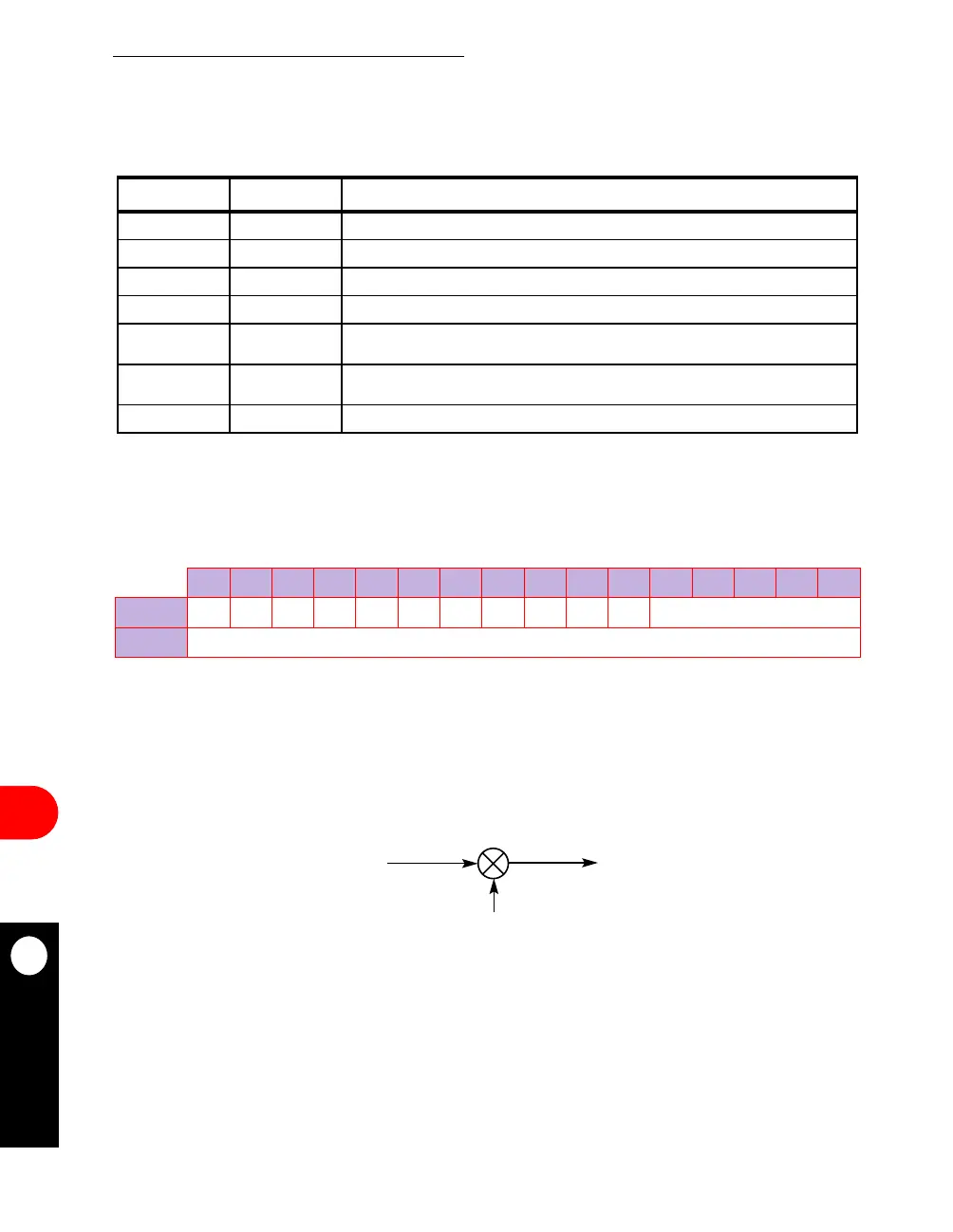Communication Processor Module
16-62 MPC823e REFERENCE MANUAL MOTOROLA
DSP
COMMUNICATION
16
PROCESSOR MODULE
16.3.4.7.3 MOD Parameter Packet. The MOD parameter packet is composed of seven
16-bit half-words and is described in the table below.
16.3.4.7.4 Application Example. The MOD is used in the modulator. The following
example demonstrates how the function descriptor structure can be used to implement the
MOD functions.
16.3.4.8 DEMOD–REAL SIN; REAL COS, REAL X, AND COMPLEX Y. The DEMOD
function implements a basic demodulator function with a modulation table composed of (cos
ωnT, sin ωnT) pairs, real input samples, and complex outputs. The input data is in a circular
buffer with size M+1 and the output data is in a circular buffer with size N+1. The AGC
parameter controls the demodulator gain.
Table 16-14. MOD Parameter Packet
ADDRESS NAME DESCRIPTION
Half-word 1 I Number of Iterations
Half-word 2 K Modulation Table Size-1. The minimum modulation table size is 8 (2 sin/cos pairs).
Half-word 3 MPTR Pointer to Modulation Table Pointer
Half-word 4 M Samples Buffer Size-1. The minimum sample buffer size is 8 (2 samples).
Half-word 5 XYPTR Pointer to a structure composed of the input sample data pointer and the output
buffer pointer
Half-word 6 N Output Buffer Size-1. The minimum output buffer size for x=1 is 8 (2 outputs). The
minimum output buffer size for x=0 is 4 (2 samples).
Half-word 7 RES Reserved
0 1 2 3 4 5 6 7 8 9 0 11 12 13 14 15
OFFSET + 0
S0WI0000000 01000
OFFSET + 2
I=3 (THREE ITERATIONS)
Figure 16-26. DEMOD Implementation Example
cos
ω
nT, sin
ω
nT, AGC
{REAL}
X(n)
Y(n)
{REAL}
{COMPLEX}
REAL Y n
(){}
1 AGC+
()
X
×
n
() ω
nTcos
×=
IMAG
Yn
(){}
1 AGC+
()
X
×
n
() ω
nTsin
–()×=

